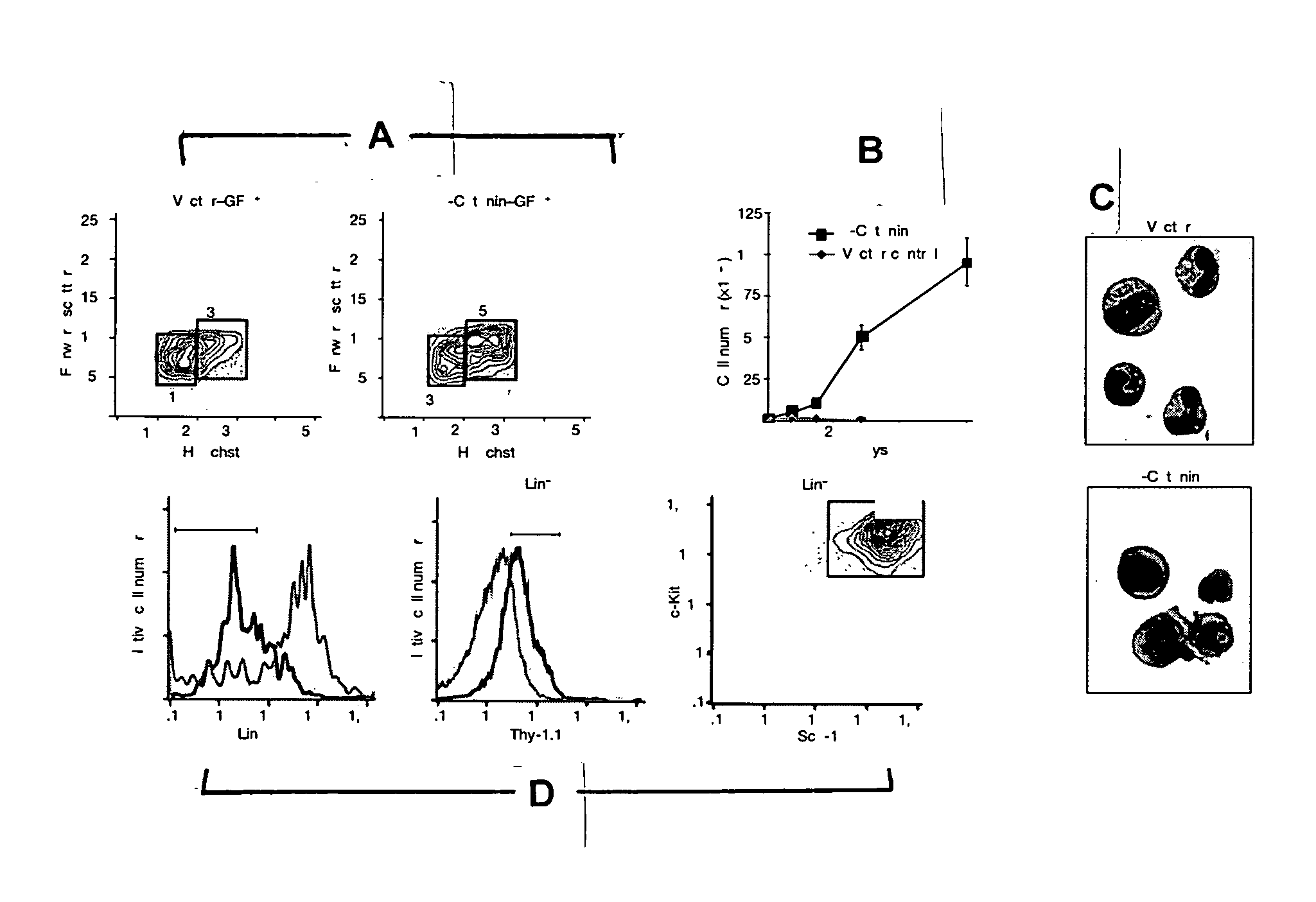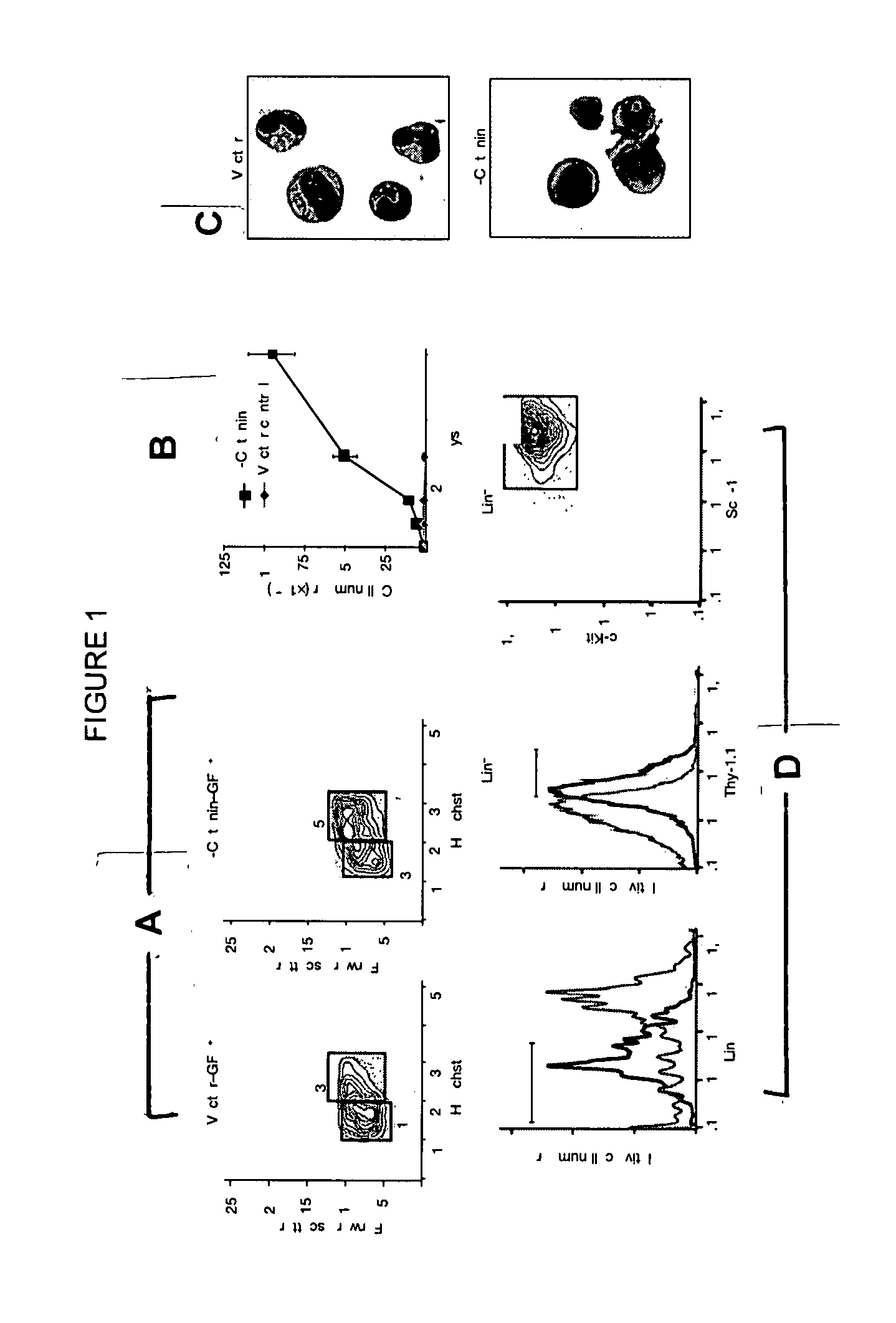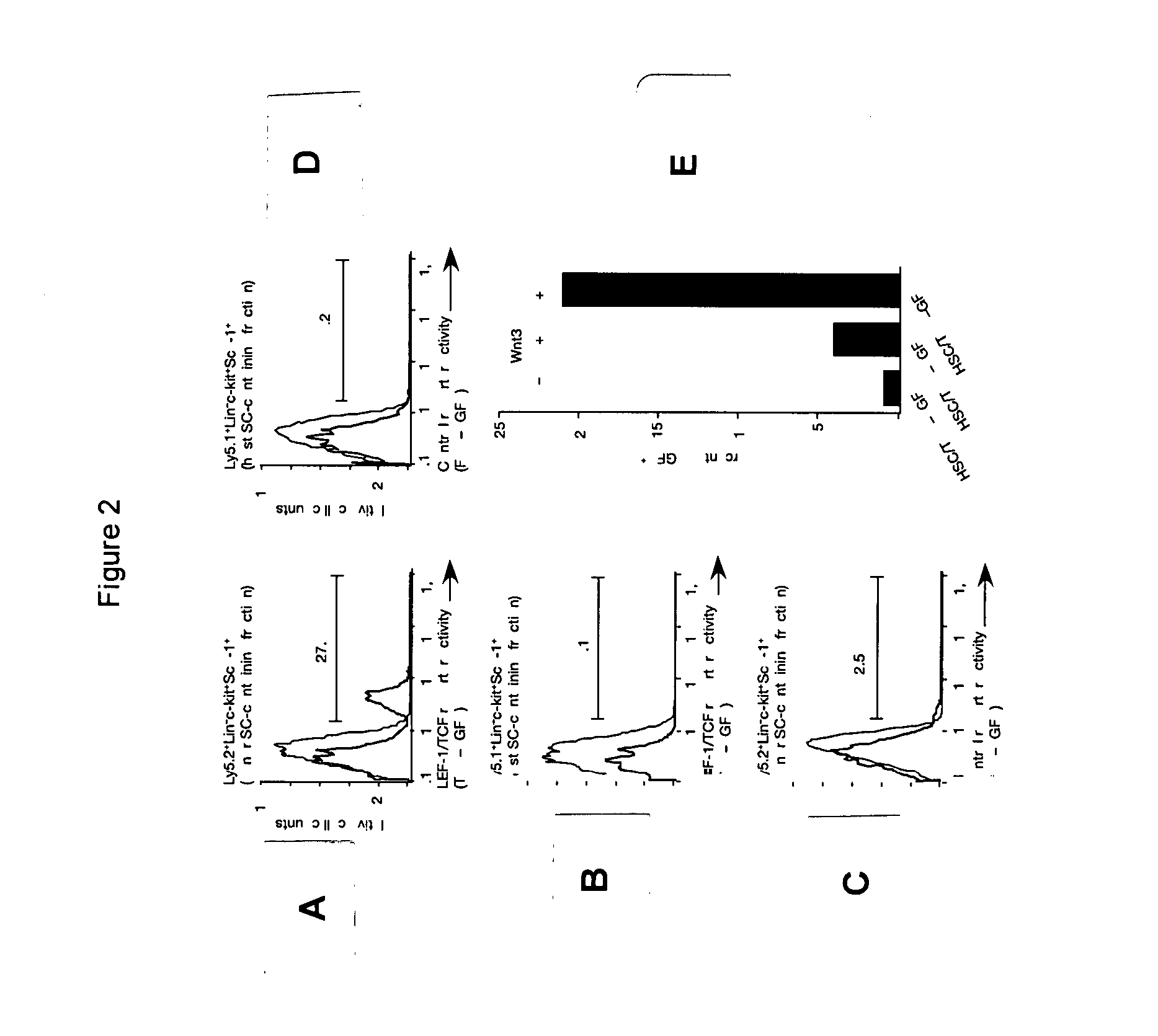Use of WNT inhibitors to augment therapeutic index of chemotherapy
- Summary
- Abstract
- Description
- Claims
- Application Information
AI Technical Summary
Benefits of technology
Problems solved by technology
Method used
Image
Examples
example 1
Assessment of Stem Cell Dependence on Wnt Signaling
[0095] HSCs in their normal microenvironment activate a LEF-1 / TCF reporter, which indicates that HSCs respond to Wnt signaling in vivo. To demonstrate the physiological significance of this pathway for HSC proliferation, it is shown herein that the ectopic expression of axin or a frizzled ligand-binding domain, both of which are inhibitors of the Wnt signaling pathway, led to inhibition of HSC growth in vitro and reduced reconstitution in vivo. Furthermore, activation of Wnt signaling in HSCs induces increased expression of HoxB4 and Notch1, genes previously implicated in self-renewal of HSCs. It can be concluded that the Wnt signaling pathway is critical for normal HSC homeostasis in vitro and in vivo.
[0096]β-catenin expression leads to self-renewal of HSCs in vitro. We first determined the effects of activating downstream components of the Wnt pathway on HSC function. We activated Wnt signaling in HSCs sorted via fluorescence-ac...
example 2
Analysis of Human Stem Cell Viability in an Animal Model
[0123] A SCID-hu animal model is set up for human bone marrow. The human HSC are tested after induction of quiescence for the presence of non-proliferating cells; and for the resumption of normal hematopoiesis after the quiescent period. The cells are then tested for resistance to killing by anti-proliferative agents that target proliferating cells.
[0124] Scid-hu bone marrow model. Human fetal femurs and tibias (1-2 cm) at 17-22 gestational week (g.w.), which are known to be active in hematopoiesis, are cut along a longitudinal axis so that bone cortex as well as intramedullary regions is exposed. These fragments are then surgically implanted subcutaneously into SCID mice. Homozygous CB-17 scid / scid mice are bred, treated with antibiotics as described (McCune et al., Science (1988) 241:1632), and used when 6-8 weeks old. Methoxyflurane anesthesia is applied during all operative procedures. Hematoxylin-eosin stained tissue sec...
example 3
Growth and Metastasis of Human Leukemia Cells in an Animal Host
[0137] A SCID-hu animal model is set up for human bone marrow, and is further tested by the addition of human leukemia cells. The human HSCs are tested after induction of quiescence for the presence of non-proliferating cells; and for the resumption of normal hematopoiesis after the quiescent period. The cells are then tested for resistance to killing by anti-proliferative agents that target the proliferating leukemia cells.
[0138] Patient samples. Bone marrow (BM) samples from myeloid leukemia patients, including acute myeloid leukemia and chronic myeloid leukemia in myeloid blast crisis, are obtained with informed consent. Mononuclear cells are isolated by Ficoll-Paque (Pharmacia) density sedimentation and are then cryopreserved in RPMI-1640 (GIBCO) containing 10% DMSO and 10% fetal bovine serum (FBS). After thawing, cells are washed with RPMI-1640 containing 10% FBS and used for flow cytometric analysis and for impla...
PUM
| Property | Measurement | Unit |
|---|---|---|
| Solubility (mass) | aaaaa | aaaaa |
| Therapeutic | aaaaa | aaaaa |
Abstract
Description
Claims
Application Information
 Login to View More
Login to View More - R&D
- Intellectual Property
- Life Sciences
- Materials
- Tech Scout
- Unparalleled Data Quality
- Higher Quality Content
- 60% Fewer Hallucinations
Browse by: Latest US Patents, China's latest patents, Technical Efficacy Thesaurus, Application Domain, Technology Topic, Popular Technical Reports.
© 2025 PatSnap. All rights reserved.Legal|Privacy policy|Modern Slavery Act Transparency Statement|Sitemap|About US| Contact US: help@patsnap.com



